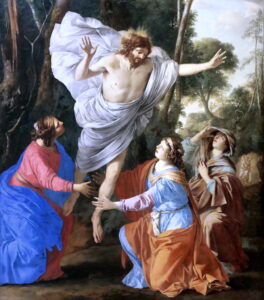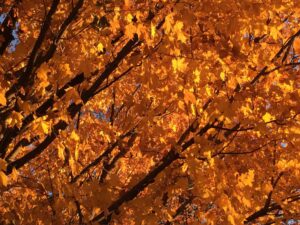Ever since I discovered Laurent de la Hyre’s “Christ Appears to the Three Marys” (1606), it has been my favorite Easter image. I love the joyous surprise on every face–including the face of Jesus! I love that their hands are not quite touching him as he ascends into glory: radiantly alive, at once in our world of time and space and transcending it.
It is Easter, friends; the day of Christ’s resurrection: a day of untrammeled, rollicking joy! But this Easter; I am also aware of the melancholy of that garden scene. Jesus is alive, yes–but he is also leaving. This joyous hello is also a poignant goodbye.
Perhaps it is because, as I approach my biblical “three score years and ten,” death and resurrection have become less and less a matter of abstract theological speculation for me, and more and more of (relatively imminent) expectation! But this year, I am reminded that, while in Christ death is not the end, that does not change the fact that, for those left behind, it really is the end–at least, for now.
It is also spring, of course: but this autumn poem by Mary Oliver captures for me at once that Easter hope of resurrection joy, and the reality of grief. Here is “In Blackwater Woods.”
Look, the trees
are turning
their own bodies
into pillars
of light,
are giving off the rich
fragrance of cinnamon
and fulfillment,
the long tapers
of cattails
are bursting and floating away over
the blue shoulders
of the ponds,
and every pond,
no matter what its
name is, is
nameless now.
Every year
everything
I have ever learned
in my lifetime
leads back to this: the fires
and the black river of loss
whose other side
is salvation,
whose meaning
none of us will ever know.
To live in this world
you must be able
to do three things:
to love what is mortal;
to hold it
against your bones knowing
your own life depends on it;
and, when the time comes to let it go,
to let it go.
Happy Easter, friends. God bless you.

